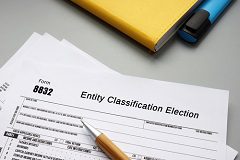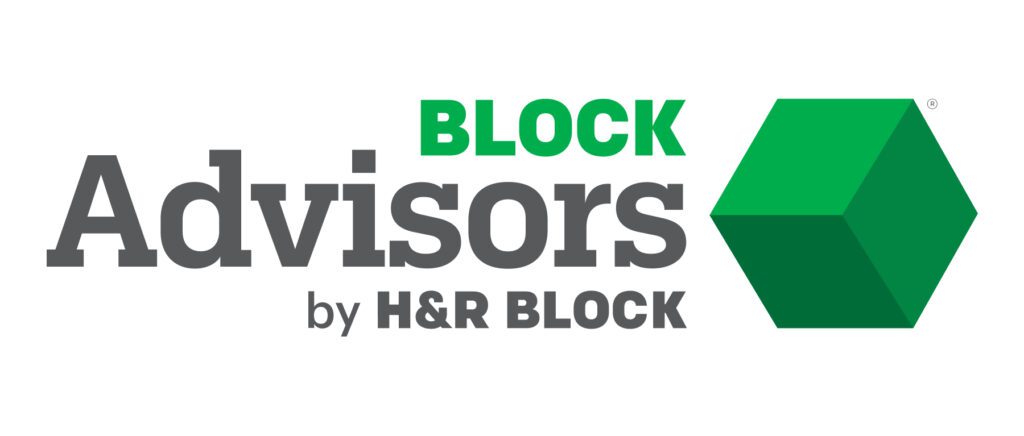Form 8832: Electing how your small business is taxed
8 min read
January 14, 2024 • Block Advisors
Choosing the right tax status for your small business is important. It can provide tax savings, or it can cost you money. If you have a limited liability company, known as an LLC, you have options in how you could be taxed. Once you understand your options and have decided to make a change, Form 8832: Entity Classification Election is what you file to change the tax status of your small business with the IRS. Get the proper guidance on business structures and their tax implications by reading our Entity 101 post.
You probably have a number of questions about how changing your tax status could affect your business and need answers. That’s why we’re here! Read on to learn what Form 8832 is, when to file Form 8832, and when Form 8832 is due in this article.
What is Form 8832?
Form 8832 is the IRS form a new Limited Liability Company (LLC) uses to elect how it wants to be taxed or an established LLC uses to change its current tax classification. Most often, the form is used by a newly formed LLC that wants to be taxed as a C-corporation.
Here’s a quick overview of Form 8832:
- Part I, Election Information. In Questions 1-3, you’ll answer a few questions about the tax election status and the number of owners of your small business. Then in question 4 or 5, depending on your previous answers, you’ll identify either the single owner of the business or the name of the parent corporation. We’ll discuss how to answer Question 6 later.
- Part II, Late Election Relief. You’ll complete this part of the form only if you are filing your tax classification after the deadline. You may be eligible for late relief if you meet each of the following requirements:
- Your election was denied because you filed the form too late.
- You haven’t filed your taxes yet because the filing deadline hasn’t passed OR you have already filed your taxes on time.
- You can provide a reasonable cause for not filing on time.
- Your requested start date is not more than three years and 75 days from your late election relief filing date.

To best explain the choices outlined in Form 8832, it’s helpful to understand the basics of an LLC.
An LLC is a type of business entity registered under state law that offers liability protection for its owners or “members.” You may choose to form an LLC for a myriad of reasons. Perhaps your business is growing and becoming more complex. Maybe you wish to manage your exposure to risk as a business owner. Or possibly, you are eyeing the potential tax benefits that come along with this entity type.
Importantly: though an LLC is a legally recognized business entity, it’s not an IRS-recognized tax entity for federal tax purposes. An LLC must elect its tax classification using Form 8832 or choose it by default.
LLC tax options
First, let’s cover the default options. Where LLCs are concerned, there are two possible defaults for tax classification purposes. The number of members in an LLC determines which of the two default rules the IRS will use.
- A single-member LLC is a company with one owner running the business. By default, the IRS taxes the single-member LLC as a sole proprietorship. In this situation, the profits or losses from the company pass through the LLC (meaning the LLC does not pay taxes) to the single-member. The single-member files taxes on the earnings each year using Schedule C of U.S. Individual Income Tax Return Form 1040.
- A multi-member LLC is a company with two or more owners. By default, the IRS taxes the multi-member LLC as a partnership. Like the single-member LLC, the profits or losses from the company pass through the LLC to the members. The multi-member LLC taxes are filed with Form 1065 with the IRS each year. A Schedule K-1 is delivered to each member so the members can report their portions of the profits or losses from the business on their own individual income tax returns.
So, what are your options if you don’t stay with the default? Single-member LLCs or multi-member LLCs can elect to be taxed as a corporation.
- S-corporation. If your LLC meets the eligibility criteria, it can elect to be taxed as an S-corporation. To elect S-corporation status, the owners must file IRS Form 2553 with the IRS. Like a sole proprietorship or partnership, the profits and losses from the LLC pass through the LLC to the S-corporation owners. The LLC will file the Form 1120-S tax form with the IRS each year in March and issue Schedule K-1s. Members will use the K-1s to report their portions of the profits or losses from the business on their own individual income tax returns using a Schedule E.
- C-corporation. Any LLC can elect to be taxed as a C-corporation. That’s where Form 8832 comes in. To elect C-corporation taxation, the owners must file Form 8832. Then, the LLC will file tax Form 1120: U.S. Corporation Income Tax Return at tax time.
Want to learn more about business registration? We’ve got your back. Block Advisors has the information and tools to help you navigate this important step for your company.
What entity structure is right for my business?
Answer these six questions to find your fit.
When to file Form 8832 and for what situations?
There are three reasons why a business within the United States should file Form 8832. You must choose one of the three reasons when completing Part I, Question 6 a-c:
- A domestic eligible entity electing to be classified as an association taxable as a corporation (6a). This option is for a newly formed LLC that elects to be taxed as a C-corporation. Here are a couple of reasons why an LLC might want to elect the tax status of a C-corporation include:
- There’s no self-employment tax since the owners are not self-employed but are employees of the corporation.
- C-corporations typically pay lower tax rates for federal employment tax and excise tax than sole proprietorships or partnerships.
- A domestic eligible entity electing to be classified as a partnership (6b). This option is for an established multi-member LLC using C-corporation tax status that now wants to change its tax status to a partnership. The reasons an LLC taxed as a C-corporation would want to reclassify to partnership status include:
- A partnership uses pass-through taxation, where all profits and losses pass through the LLC to the owners. That way, the LLC does not file a federal tax return but does file an informational return as mentioned above. The owners simply file their own personal tax returns.
- A partnership is not subject to double taxation. Double taxation means the owners pay taxes on both the LLC income and the distributions made to the owners.
- A domestic eligible entity with a single owner electing to be disregarded as a separate entity (6c). This option is for an established single-member LLC using C-corporation tax status that now wants to change its tax status to a sole proprietorship. The reasons an LLC taxed as a C-corporation would want to reclassify to sole proprietorship status include:
- A sole proprietorship uses pass-through income, where all profits and losses pass through the LLC to the owner. The LLC does not file a federal tax return, and the owner simply files a personal tax return.
- A sole proprietorship is not subject to double taxation.
If your small business is outside the U.S., you should check out our article for Form 8832 for foreign entities.
Want to learn more about how LLC taxes work? Check out our post on how LLCs are taxed.
When is Form 8832 due?
There is no set date when Form 8832 is due as you can file it at any time. But know that your tax election can only be applied to a full tax year. If you file your Form 8832 during your company’s fiscal year, the entity election will take effect the following year.
However, you do have the option to apply for Late Election Relief on Form 8832, Part II, as discussed above. To apply, you’ll need to provide a detailed, written explanation for filing a late election.
Also, there are certain restrictions on the effective date of your election. The effective date can’t be more than 75 days before your Form 8832 is filed or more than 12 months after your 8832 tax form is filed. If you must file after the first 75 days of the fiscal year, you’ll need to apply for late election relief.
A note of caution: If you want to file Form 8832 to reclassify to a sole proprietorship or partnership, you must be certain of your decision. An LLC can only change its entity election once every 60 months unless an exception applies.
Get help with Form 8832
Still have questions about filing Form 8832 for your LLC? A trusted Block Advisors certified small business tax pro can help you determine the tax status that’s best for your bottom line during your tax filing appointment.
When you work with Block Advisors, we can complete the paperwork and file your Form 8832 for you — and any other tax forms you may need during your tax filing appointment. That way, you can get back to running your small business.




